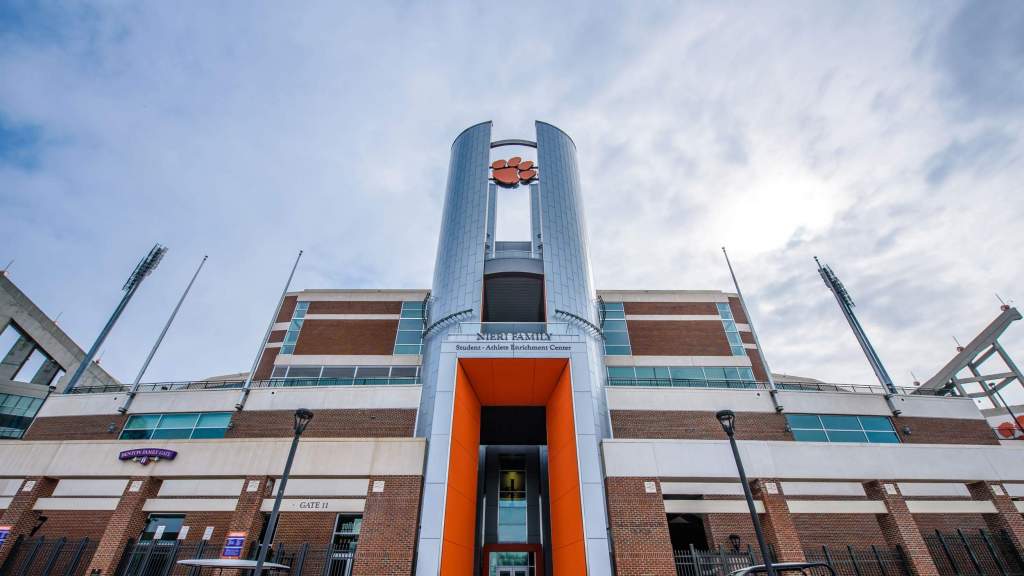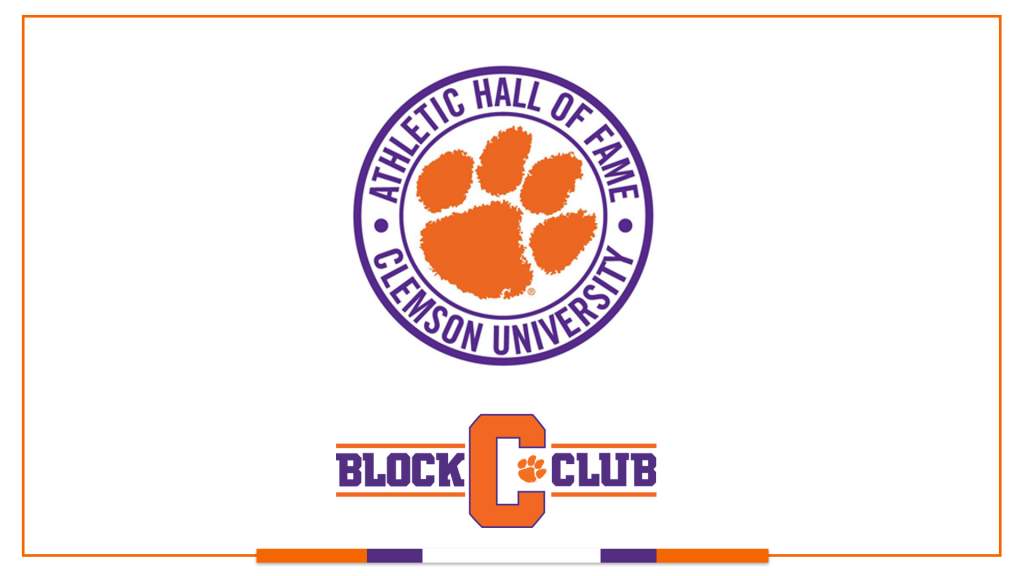March 11, 1999
CLEMSON, S.C. – Tommy Bowden is obviously a coach who is motivated by a challenge. In 1997, he took over a Tulane program that had not experienced a winning season since 1981 and had won just five games in the previous three years. In two years he had achieved the miraculous, bringing the Green Wave to a perfect 11-0 regular season in 1999 and a top 10 ranking. His two-year mark of 18-4 brought instant national aclaim to program that had not been ranked in the final top 20 since 1973.
Last December, Bowden accepted another challenge. Although Clemson has been to six bowl games in the 1990s, he inherits a team that posted a 3-8 record in 1998, the program’s worst overall record since 1976. That included a 1-7 record and last-place finish in the ACC, also the worst conference performance in 22 years. Clemson has not ranked in the final top 20 in either poll since the 1991 season.
Often when a team has a losing season it is due to the presence of youth on both sides of the ball, thereby leading to the return of experienced players the following season. But, Bowden won’t have that luxury in his first season. The Tigers return just 41 lettermen and 11 starters from a year ago. It is just the second time in the last 20 years that 41 lettermen or less return. Only twice in the last 20 years has Clemson returned fewer than 11 starters in any season.
Bowden faces his biggest challenge in the offensive line, where no starters return from a year ago, the first time Clemson has been devoid of returning starters in that important area since 1943. And, it took a World War for that to happen as Clemson’s entire junior and senior classes had been drafted into military service over the summer.
Defensively, six starters and 23 lettermen are back from a unit that ranked 14th in rushing defense and 25th in total defense. There is much more depth on the defensive side of the ball in comparison to the offense, but the loss of high NFL draft choices Rahim Abdullah, Antwan Edwards and Adrian Dingle certainly will have an effect.
In terms of the kicking game, the Tigers are starting from scratch. No active player on the Clemson roster has ever punted or attempted a place kick in a Tiger game, as 1998 startering kicker David Richardson and starting punter Kevin Laird have graduated.
Can Bowden bring Clemson back to the level of success it attained from 1981 to 1991 when the Tigers won an even 100 games, ranked in the final top 20 in nine seasons, and posted a winning percentage of .795? He certainly has a proven blueprint for success through his experience at Tulane.
“A coach instills his own personality and temperment when he comes to a program,” said Bowden. “How quickly the players adjust to the system will determine our success rate. That is what happened at Tulane, they bought into the program very quickly. They were willing to do what it took to make adjustments, do what was necessary to win.
“From every indication, these players at Clemson are willing to do what this staff has asked, do what is necessary to be successful. There is a sense of urgency in our program right now. Rebuilding is not a word that the players and coaches and obviously our fans want to hear.
“It is important for these players to buy into the program quickly. The seniors I have talked with don’t want to rebuild, and neither does the staff and administration, they want to do what it takes to win now.”
Given transfers, and players turning professional a year early, Bowden will have just 77 players on scholarship and only eight of those are seniors. This will be the smallest senior scholarship class at Clemson since the 1985 season. Bowden does not see that as a negative from a leadership standpoint. In fact, it might accelerate the “buying into the program” process.
“Leadership from a senior class usually comes at a program that has had a head coach who has been with the program for five years or more. In that situation your best leadership comes from the senior class.
“But in a new situation, like we have here, that leadership can come from anyone. A lot of times the younger players who haven’t played that much previously get a new lease on life and are excited about a new way of doing things. I am sure we are going to get great leadership from our seniors, but I think it will come from younger players who are energized by change.”
If Bowden doesn’t have enough challenges in his rookie season, he must face a schedule that includes seven 1998 bowl teams, just the second time in history Clemson must face seven teams that had been to a bowl game the previous season. In each of the first five games in 1999 Clemson will face a team that went to a bowl game last year. Only five of the games are at Death Valley, just the second time since 1977 Clemson will play just five home games.
The season opener is against a Marshall team that has been 22-4 with two conference championships over the last two years. The Thundering Herd showed last year they could win without superstar Randy Moss in the lineup when they compiled a 12-1 ledger. The next four games on Clemson’s schedule are against 1998 bowl teams who defeated Clemson a year ago.
The Tigers have just two home games in their last seven contests. One of those is certain to bring national attention to Clemson. Bobby Bowden’s Florida State Seminoles, a favorite to win the National Championship in the final year of the millenium, will be at Death Valley on October 23rd. That contest will be the first coaching confrontation between father and son in Division I history.
“I am sure as the game approaches it will become more significant and I will be more emotional about it,” said Tommy Bowden. “At this point in the spring, we are concentrating on our entire schedule. Obviously, Florida State is the team to beat in this conference. Everybody in the ACC has been chasing Florida State since they came into the league.”
Offense (5 returning starters, 18 returning lettermen) At first glance, it would appear that Clemson’s adaptation to Tommy Bowden offense from previous administrations would be akin to Russia’s governmental movement from Communism to Capitalism. Hopefully Clemson won’t have as many growing pains.
The Tigers have generally been a methodical offense for the last 20 seasons, with a strong rushing attack serving as the staple of the design. Clemson has led the ACC in rushing 10 of the last 21 years and rushed for at least 200 yards per game in 15 of the last 21 seasons.
It is true that Bowden’s Tulane team averaged 305 yards passing and threw for 38 touchdowns in its magical season of 1998. But, the Green Wave also rushed for 2226 yards and scored 26 touchdowns rushing.
“If we can rush for 2,000 yards next year we will have a productive year in terms of wins and losses,” said Bowden when discussing his offense. “Rushing the football is a very big part of this offense. We had over 2000 yards rushing at Tulane the last two years and could have had a 1000-yard rusher if we did not split the work for our running backs. We would like to have a 1000-yard rusher at Clemson this season and have 2000 yards rushing as a team. If we can’t run the football we are going to struggle on offense.”
While rushing is an important aspect of the offense, the throwing game and the corresponding multiple wide-receiver formations will be revolutionary for Clemson enthusiasts. “We have nine scholarship receivers on offense right now, I would like to travel 10 and we will make that up in recruiting next year. We will have formations that use three, four and five receivers.”
Tulane’s offense was the only attack in the nation last year to average at least 300 yards passing and at least 200 yards rushing in 1998. “I would characterize our offense as a multiple formation, up-tempo attack. We will use a lot of no-huddle and shotgun that puts stress on the defense. We want the defense to defend the entire 53 yards of the field horizontally, then make them defend all 100 yards vertically.”
This up-tempo attack means Clemson will not feature offensive linemen who bank on brute strength. “I like big, tall, quick offensive lineman. We had that at Tulane the last couple of years, we had quick offensive linemen. Our schemes involve a lot of movement in the offensive line. We must have athletic offensive linemen. Some teams just pull the guards, we have a lot of movement with the tackles. All five interior linemen must be quick and have stamina because of the no-huddle aspect.”
He has already worked to physically mold his offensive lineman to the uptempo style. The 10 returning scholarship offensive linemen on his spring roster have collectively lost 104 pounds relative to their fall of 1998 playing weights. The starting interior five linemen who were first team players this spring average 280 pounds, while the starting five last year averaged and even 300 pounds.
The question is, does Clemson have the players to fit the system. But, Bowden is quick to point out there are adaptations to his system. “There are many elements to the offense. We have I-formation and means of moving the football that we can adapt to the talents of our current players.
“I haven’t watched a lot of film from last year and don’t plan to. When I look at the film I don’t know what they were coached to do. Everyone will have a fresh start. I am not going into spring practice with a preconceived notion.”
A look to the film from last year might show that adapting to the Tommy Bowden offensive system might not be as drastic as first expected. Over the last four games of the 1998 season, Clemson used a shotgun, multiple wide receiver attack with success. Clemson averaged 27.8 points, 222 yards passing and 20 first down per game over the last four contests.
Brandon Streeter is the returning starter at quarterback. The native of Pennsylvania showed improvement over the course of the season and concluded the season with the second best passing season in school history. The son of the head coach of Gettysburg College threw for 1948 yards and connected on 150 passes in 1998, the second highest single season figures in Clemson history in both areas. His 13 touchdowns passes tied for third best in Clemson history. He was especially effective over the last four games when he completed 74-133 passes for 887 yards and nine touchdowns.
Streeter set a Clemson single game passing record against NC State when he completed 27-38 passes for 329 yards and three touchdowns, leading Clemson to 39 points against a team that held Florida State to just seven points earlier in the season.
Another returning letterman at quarterback is sophomore Woodrow Dantzler. The outstanding all-round athlete played in five games a year ago, one as a starter. He completed 8-17 passes for 82 yards and also rushed for 84 yards in 34 attempts. Dantzler and Streeter were the only two quarterbacks to throw a pass for the Tigers last year.
Slade Nagle and Matt Schell are two more scholarship quarterbacks returning in 1999. Nagle is a sophomore who was the third-string signal caller last year who played in one game, but did not throw any passes. Schell sat out last year and will be a red-shirt freshman in 1999.
The top four running backs from last year should return in 1999. Travis Zachery was Clemson’s leading rusher in 1998 with 635 yards and four touchdowns in 158 carries. He was seventh in the ACC in rushing and also led the Tigers in all-purpose running with 995 yards, a record for a Tiger freshman. He showed an ability to catch the ball out of the backfield with 15 receptions for 144 yards and a score. Zachery was suspended for the spring practice due to “in house discipline” from Bowden, but he could return in the fall.
Although not a starter in 1998, Javis Austin was a top all-around performer last year. He ranked second on the club rushing with 72-279 yards and three scores, and also finished third in receiving with 24-159. His 24 receptions established a school mark for catches in a season by a running back. He is also a capable return man.
Austin, a native of Clemson, had his top game in the season finale, a 28-9 victory over South Carolina. He had 9-50 rushing and 3-32 receiving. He scored a touchdown in each area.
Senior Terry Witherspoon is the returning starter at fullback. The fine 252-pound blocker had 56-157 rushing and scored three touchdowns. Vince Ciurciu had 27-99 rushing for the season as a first-year freshman and certainly will be a factor in the Clemson offense. Gary Johnson, who red-shirted last season and is 15-pounds stronger in the spring, will be back to challenge for playing time in 1999.
Tommy Bowden uses many wide receivers in his offensive attack and he does inherit a deep group of players at that key position in 1999. Three players, including a pair of experienced seniors, return who had at least 20 receptions in 1998. Overall, six returning lettermen who combined to catch 92 passes last year are back, including senior leaders Brian Wofford and Mal Lawyer.
Wofford and Lawyer combined for 66 receptions for 999 yards and eight touchdowns in 1998. In the NC State game, both receivers went over 100 yards, the first time in school history that the Tigers have had two 100-yard receivers in the same game.
Wofford, a senior who will be in his third year as a starter, had 35-535 yards and five scores. The native of Spartanburg, SC actually had consecutive 100-yard receiving games against Duke and NC State. He had at least one catch in 10 of the 11 games last year and is 11th in school history in receptions and 13th in receiving yardage entering 1999.
Lawyer was the second leading pass catcher last year with 31-464 and three scores. He is also a fine return man as shown by his seventh place ranking in the ACC in kickoff returns. He had 8 catches for 100 yards and two touchdowns against NC State and had 181 all-purpose yards against the Pack. Like his close friend Wofford, he had at least one catch in 10 of the 11 games last year.
Rod Gardner is a third returning receiver with at least 20 catches a year ago. He started in three games last year and made many acrobatic catches, including two against South Carolina in the season finale. He showed his ability to go deep when he caught a 63-yard pass on the first drive of the Wake Forest game.
Justin Watts, Matt Bailey and Mike Seth are three more returning lettermen at wideout. Watts had 4-44 last year and might have the best hands on the team. Bailey had one catch in eight games in limited action as a freshman, while Seth played in every game last year and had one reception. Jackie Robinson, who red-shirted the 1998 season, is another wide receiver who will be a factor this year. The high school teammate of quarterback Woodrow Dantzler might have been the top signee of the freshman class of ’98.
T.J. Watkins is the only returning tight end with experience. As a freshman he had three catches for 64 yards. He started four games and averaged 40 plays per game as a rookie. Watkins howed improved blocking abilities as the season progressed. Pat Cyrgalis and Jason LeMay, who both red-shirted last year, are also factors at that position.
The offensive line will be a focal point for Bowden during spring practice. As stated previously, this is the first time in 56 years that Clemson enters a season without a returning starter on the interior. Additionally, there are only four returning lettermen on the offensive line positions.
The only player on the Clemson roster who has started a game on the offensive line is Kyle Young. Named Mr. Football in South Carolina his senior year at Daniel High School, Young had an outstanding freshman season. He started the last four games at a guard position, but should move to center, his position in high school, in 1999. The Dean’s List student played at his best in the victory over South Carolina, in particular on a goal line devastation block that allowed Javis Austin to score a touchdown.
Young should have reserve help in Will Merritt, who played in one game at center a season ago. Merritt has lost 15 pounds since last year and is much quicker.
Akil Smith, a reserve who averaged 40 snaps a game at tackle over the last five games of the season, should inherit a starting role at a tackle position. He is an outstanding pass blocker with quick feet who has star qualities. Brady Washburn, whose father is a line coach at the University of Houston, is a top candidate for the other starting tackle position.
John McDermott, who played 56 snaps in six games, will challenge Washburn, while red-shirt freshman David Haselden is backing up Smith. the 6-7 Haselden has lost 20 pounds since last year.
Neely Page is a first team guard for 1999 who played 64 snaps in eight games a year ago. He is flanked by Gary Byrd, another red-shirt freshman. “Big Byrd” has lost 18 pounds since last year, which should enhance his quickness for Bowden’s uptempo offense.
Jeremy and Jason Carroll are twin brothers from Dalton, GA who should help the line area down the road. Jeremy red-shirted the 1998 season at Clemson and is a second-team guard, while Jason entered Clemson in January and will begin his tutoring process in the Spring. Theo Mougros isa second-team guard who has lettered as a defensive lineman and sometime “jumbo attack” fullback. He was moved to a second-team guard position in the spring.
Overall, this is the youngest offensive line in Clemson history. The starting five interior line is composed of three sophomores and two freshmen, while there are only two juniors and no seniors among the top 10 linemen. The tight end position is also devoid of upper classmen.
Defense (6 returning starters, 23 returning lettermen) While the Clemson offensive players will be spending much of the spring learning new formations and terminology, the Tigers defensive players won’t spend nearly as much time in tutorial sessions. Bowden retained defensive coordinator Reggie Herring when he took over at Clemson, so much of the defensive theory will remain the same.
Herring has been a linebacker coach at Clemson since December of 1993, and spent the 1997 and 1998 seasons as defensive coordinator. In both of his seasons as defensive coordinator, Clemson ranked in the top 25 in the nation in total defense. Last year, in Clemson’s 3-8 season, rushing defense and total defense were not problems, as Clemson ranked in the top 25 nationally in both areas. Additionally, Clemson led the ACC in sacks and was second in the league to Florida State in rushing defense, total defense and third-down conversion defense.
Overall, Clemson has a strong heritage when it comes to defense. Over the last 10 years, Clemson has ranked in the top 20 in rushing defense eight times, in the top 20 in scoring defense seven times and in the top 25 in top 25 in total defense five seasons.
Herring will play a 4-3 defense in 1999, a formation Clemson used much of last year even though it was called a 50. The Tigers will lineup with two defensive tackles, two defensive ends, three linebackers, and four defensive backs this season.
Clemson’s level of proficiency will be a function of the performance of six returning starters and 23 total returning lettermen. Clemson is most deep when it comes to starters in the secondary, yet one of the areas of concerning in the spring is depth in the secondary and at linebacker.
“The general philosophy on defensve mirors the philosophy on offense,” said Bowden. “If we are going to be upbeat, fast tempo on offense I want to play a similar style defensively. Reggie’s style and temperment is consisten with that style.
“However Reggie wants to keep the opposition out of the endzone, that is the objective. We want to force the offense to make plays. Putting on a lot of defensive pressure is the best way to do that. We will take away the easy throws and get in their face. That is what they have done here in the past.”
The Tigers have two returning starters and eight returning lettermen upfront, probably the deepest area of the Clemson team. But, are no returning stars from this area of defense that has a first or second-team All-ACC player every year since 1981.
Former Clemson defensive linemen who have excelled in the pros in recent years include two-time Super Bowl Champion Trevor Pryce with the Denver Broncos, five-time Pro Bowl Selection Michael Dean Perry, San Francisco 49er starter Brentson Buckner and 1999 draftee Adrian Dingle. Dingle set a Clemson single season sack record with 10.5 last year and he will be the biggest replacement on the front line this year.
A player Clemson will look to for leadership and production upfront this year is returning starter Terry Bryant. The native of Georgia suffered an ankle injury in 1998 that forced him to miss the last three and a half games. He was consistent over the first eight games with 26 tackles and was big reason Clemson allowed just 104 yards per game on the ground.
Gary Childress is a second returning starter on the defensive line. Perhaps Clemson’s most improved lineman from 1997 to 1998, Childress started all 11 games and finished the season with 32 tackles. He had two tackles for loss and five tackles in the win over South Carolina and had a tackle for loss in the endzone for a safety against Virginia.
Damonte McKenzie and Terry Jolly are two multi-year lettermen who are also top line players at defensive tackle. Both have started games over their careers, but would not be considered returning starters.
McKenzie is the only three-year letterman on the defensive front and had 37 tackles last year, including five for loss. He had 19 tackles in the last four games to finish with a flourish. Jolly started off and on the last two seasons and had 27 tackles while playing 35 plays per game a year ago.
Jason Hollomon is running first team at defensive tackle this spring. He posted 31 tackles and four sacks last year, including a pair of sacks at Florida State. Jovon Bush is a reserve tackle with great potential. He lettered as a freshman, but his playing time should increase. Freddie James, one of the top student-athletes in an engineering curriculum, had 22 tackles in 11 games a year ago and played in every game and will challenge for playing time this year. He had a career high five tackles against South Carolina.
Three red-shirt freshmen should aid the Clemson cause this year. Nick Eason, an outside linebacker during his red-shirt season, has moved to defensive end, while Brandon Rouse is a 255-pounder who is second-team behind Terry Bryant in spring practice. Nathan Gillespie is another red-shirt freshman who will see playing time on the defensive line.
Traditionally, Clemson has been one of the best in the nation when it comes to linebackers. In recent years, one publication listed Clemson as the top linebacker producer in the country, and that has been reflected in the performance of recent NFL players Levon Kirkland, Ed McDaniel, Wayne Simmons and Anthony Simmons.
No player with that type of star quality is on the roster this year. In fact, Clemson is as experienced in this area of the team as it has been in the last decade. Harold Means is a returning starter, but Bowden must replace leading tackler Chris Jones (128 stops) and first-round draft choice Rahim Abdullah (89 tackles, 15 tackles for loss).
Means, who played his high school football with Anthony Simmons at Spartanburg High, started seven games last year and had 94 stops, third best on the team. In fact, his 8.5 tackles per game ranked 13th best in the ACC last year and is sixth best among returning players for 1999. Means had a breakout game against South Carolina when he had two sacks and three tackles for loss.
Keith Adams is a precocious sophomore who could move into a starting linebacker position. Fifteen pounds stronger as a sophomore, Adams was a first-year freshman in 1998 when he had 45 tackles in 176 plays. He had 10 tackles in the season’s 10th game against Georgia Tech, then had seven in the victory over South Carolina. He is one of the quickest young linebackers in the ACC.
Braxton K. Williams is a returning letterman who will be a frontline player on Clemson’s second line of defense. Williams had eight tackles, including two tackles for loss and 1.5 sacks in 1998. Both of the sacks were at Virginia, where he played his best game of the season.
Altroy Bodrick, Kenzi Ross, Chad Carson and J.J. McKelvey are also in the linebacker picture. Bodrick played in nine games on defense and had seven tackles a year ago, while Carson was the top special team tackler with 10.
Kenzi Ross played 20 snaps as a red-shirt freshman and will also challenge for playing time. But, a knee injury suffered on the second day of spring practice, limited his progress.
Three starters return in the secondary. Robert Carswell is an all-conference candidate at the free safety position after finishing last year with 102 tackles, most in the ACC by a sophomore. His tackle total was ninth best overall in the ACC and second best among returning players for this year. The consistent player had at least nine tackles in eight of the 11 games in 1998, including 11 in the victory over South Carolina at season’s end.
DoMarco Fox was Clemson’s starter at free safety last year, but he will move to cornerback in the spring, looking to replace graduated All-American Antwan Edwards. Fox sufferred from a knee injury late in the season, but did have 12 tackles against Georgia Tech. He had 54 tackles as a junior after recording 74 as a sophomore. He is excited about his opportunity at cornerback, a position he has played in just one game in his first three years (South Carolina, 1997).
Alex Ardley is a returning starter at cornerback. As a red-shirt freshman he had 10 passes broken up, most ever by a Clemson freshman. His 70 tackles ranked fifth on the team and his 26-yard interception return for a touchdown at North Carolina was certainly a season highlight.
The fourth starter in the secondary could be sophomore Charles Hafley. The strong safety came on strong at the end of the year when he had eight tackles in 47 snaps against South Carolina. In his ACC Rookie-of-the-Week performance, he had an interception, caused fumble, recovered fumble and a touchdown saving pass deflection.
Depth in the secondary will be provided by Darrel Crutchfield, a starter in the last four games of the 1997 season, David Evans, also a starter at times in 1997, Dextra Polite, a two-year lettermen at cornerback, and Chad Speck, who had a touchdown on a blocked punt return against Auburn in the 1998 Peach Bowl.
Special Teams The kicking game will be looking for two new starters in 1999. Punter Kevin Laird held the position for three years and left Clemson with five school records. He averaged 41.5 yards a boot on 75 punts last year. He was very effective when it came to field position, as his 17 punts over 50 yards and his 18 punts inside the 20 demonstrated. Placekicker David Richardson was 8-15 on field goals last year and was Clemson’s leading scorer with 44 points.
Both players left Clemson with degrees, but they also took all the kicking experience with them. No player on the Clemson roster has ever punted or place kicked in a Tiger game.
Ryan Romano, the top upperclassmen on the football team in terms of grade point average, has been on the Clemson roster for two years and is a scholarship candidate for both jobs. Con Chellis is a transfer from Mississippi who will challenge for a kicking position. Jamie Somaini is a walk-on placekicker who has worked hard in practice for the last two years.
The return game will feature Mal Lawyer. The senior had 14 kickoff returns for 247 yards a year ago. He was also working as a punt returner in the spring, but has never performed the duty in a game. Javis Austin and Brian Wofford are two more veterans with experience as far as kickoff returns are concerned. Travis Zachery is the top returnee as far as punt returns, he had 26-216 yards last year, an 8.3 average.
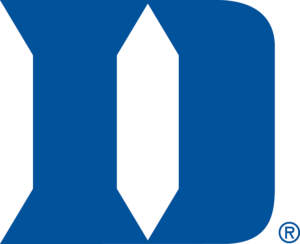 Duke
Duke 
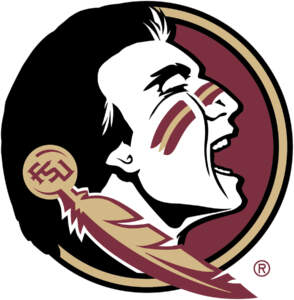 Florida State
Florida State 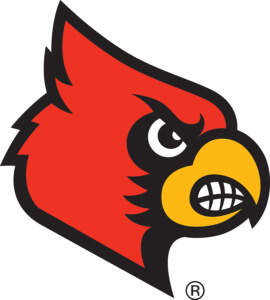 Louisville
Louisville 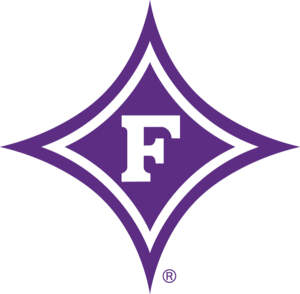 Furman
Furman 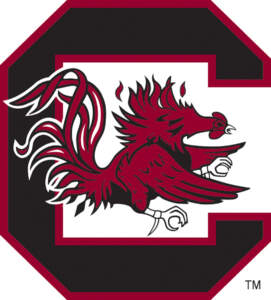 South Carolina
South Carolina  LSU
LSU 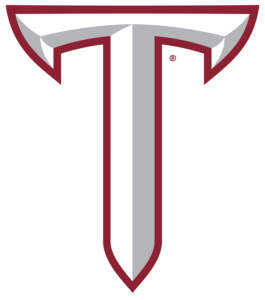 Troy
Troy 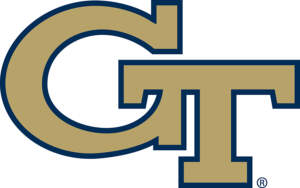 Georgia Tech
Georgia Tech 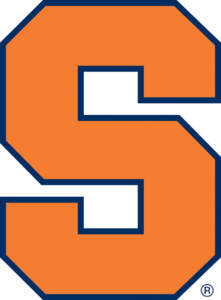 Syracuse
Syracuse 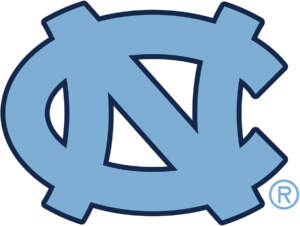 North Carolina
North Carolina 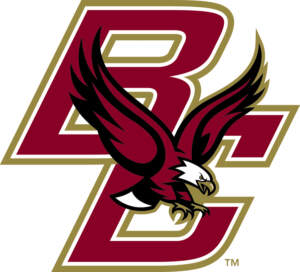 Boston College
Boston College 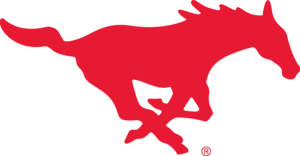 SMU
SMU 


